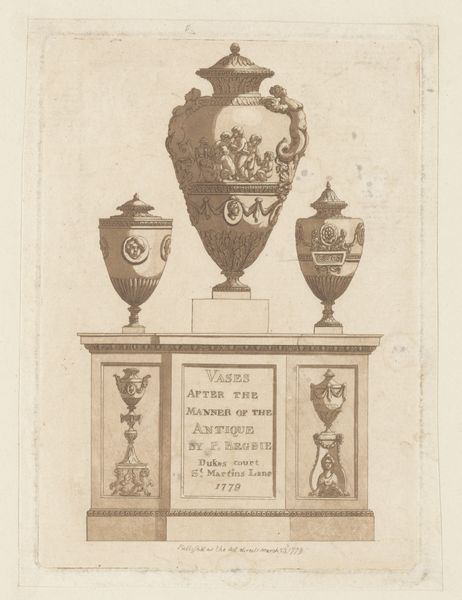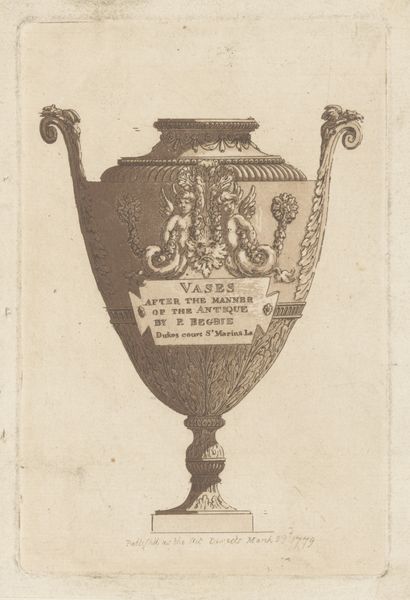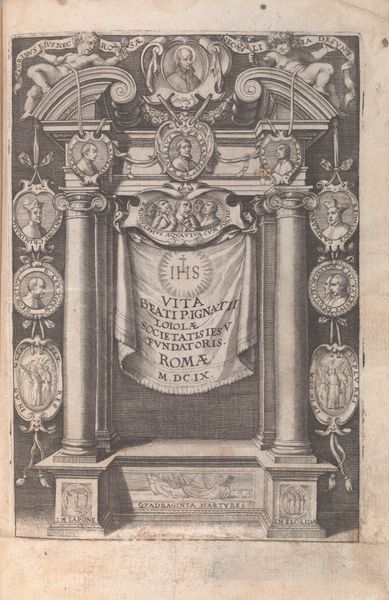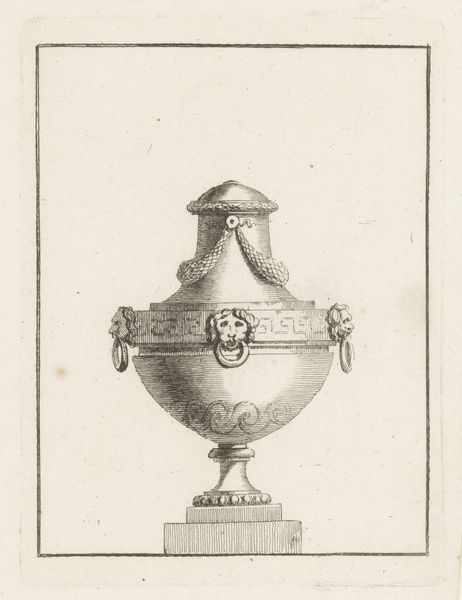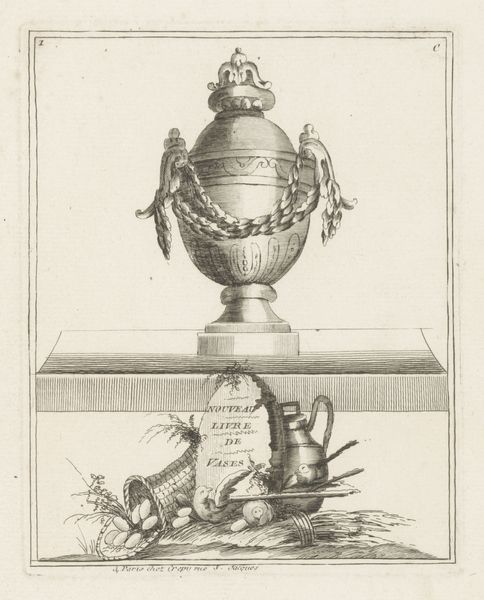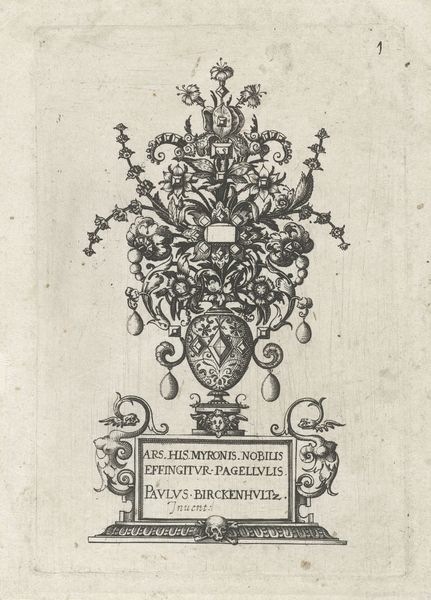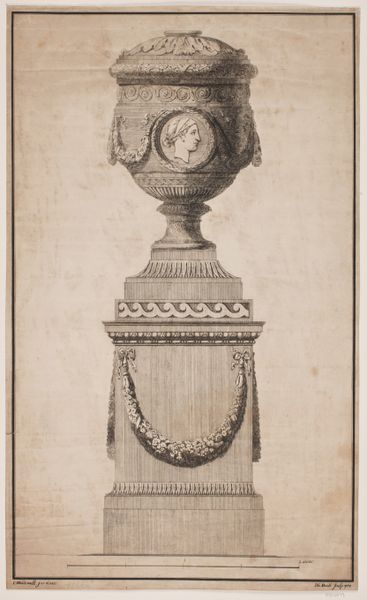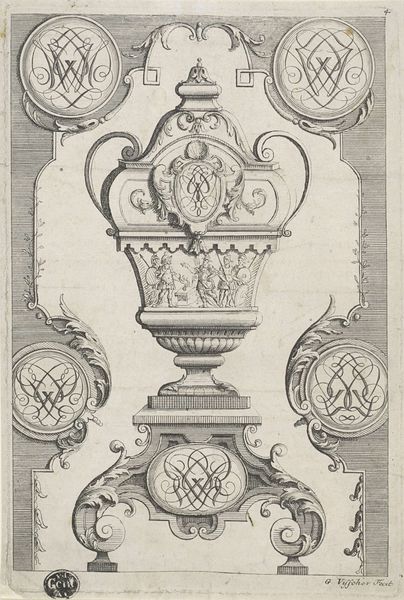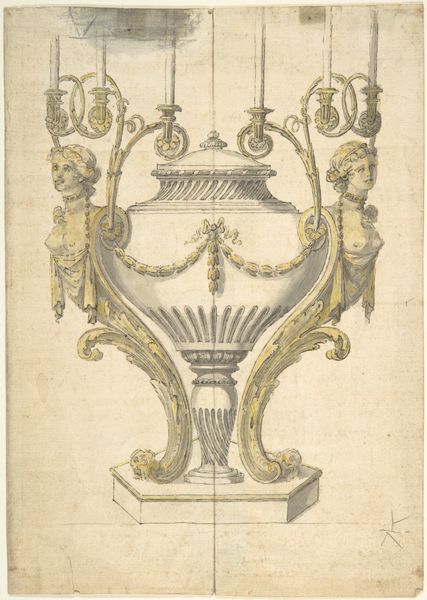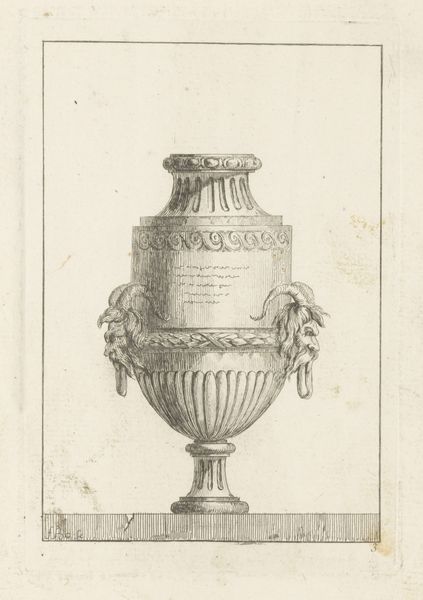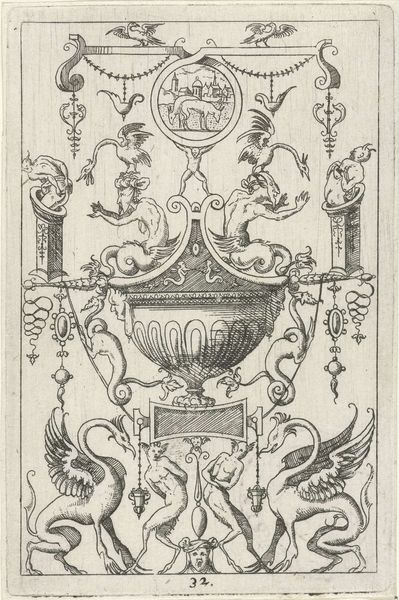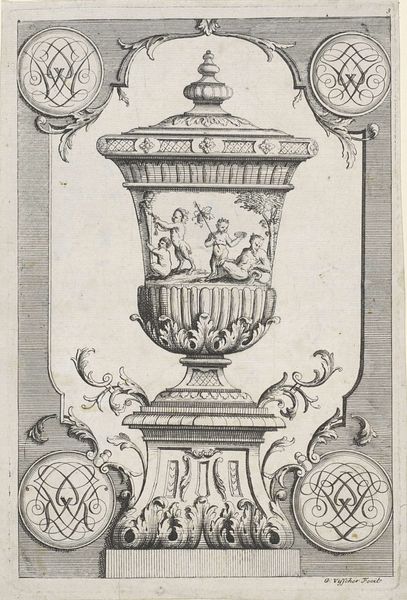
print, paper, engraving
#
neoclacissism
# print
#
figuration
#
paper
#
form
#
line
#
history-painting
#
engraving
Dimensions: plate: 15.3 x 16.5 cm (6 x 6 1/2 in.) sheet: 11.6 x 12 cm (4 9/16 x 4 3/4 in.)
Copyright: National Gallery of Art: CC0 1.0
Curator: Patrick Begbie created this engraving titled "Title Page" in 1779, showcasing neoclassical motifs. Editor: It’s so meticulously rendered. I’m struck by how much texture and weight Begbie achieves with such fine lines. It's oddly…stately and serene. Curator: Well, Begbie worked primarily as a designer for metalwork and furniture. This print almost serves as a prospectus for his designs. Notice how he highlights the material quality even within the engraving. Editor: Exactly! The symmetrical arrangement around the title text evokes classical composure. And I can't help but note the sphinx-like figures flanking the central inscription. The symbolism adds an element of watchful guardianship, as if to declare that true artistry protects us. Curator: Yes, and observe how Begbie literally frames "Vases After the Manner of the Antique," indicating a cultural debt being purposefully foregrounded in both design and dissemination. These weren't simply decorative forms; they communicated refined taste. It's all a transaction in value isn't it? Material goods broadcasting their owner’s status through deliberate and manufactured consumption. Editor: Right, the antique vase held immense cultural significance, often seen as vessels containing the secrets of past civilizations. The details are like clues—the grotesque masks, the acanthus leaves... All suggesting something primal lurking beneath the polished surface of Neoclassicism. Curator: It all adds to an almost overwhelming display of cultural capital. Look at the deliberate process of engraving – labor-intensive and skill-based—in producing multiples of this advertisement that extends and supports that value system. Editor: The deeper I look, the more I find within these familiar Neoclassical forms. Perhaps that is what is so inviting in the artwork to begin with: to unravel the symbols woven within our shared memory. Curator: Yes, considering the circulation of printed material back then it emphasizes how aesthetic forms themselves become commodified in the marketplace. Editor: I find this detailed print hints at more than design trends and commodity culture of the time period; it presents how potent and perennial cultural symbols of rebirth remain through shifts in social tastes and practices.
Comments
No comments
Be the first to comment and join the conversation on the ultimate creative platform.
